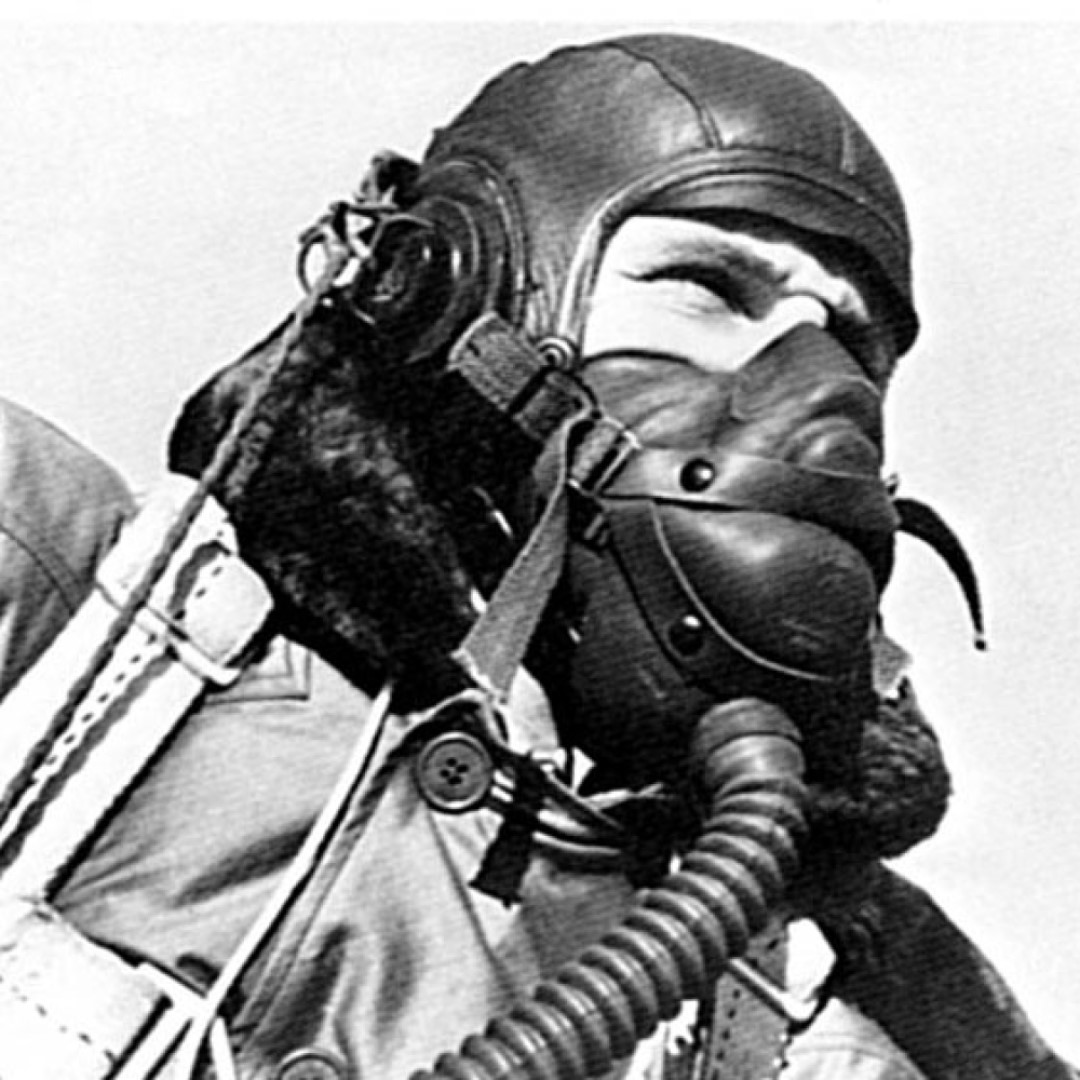
Mayo research led to the development of an anti-blackout suit worn by American fliers in World War II
In 1942, the U.S. government with the military secretly tasked a small group of Mayo Clinic physicians and researchers to develop technology that would help lead the U.S. and its Allies to victory a few years later. Mayo Clinic physician-researchers Walter Boothby, M.D.; W. Randolph Lovelace II, M.D.; and Arthur Bulbulian, D.D.S., had successfully designed an oxygen mask, called the BLB mask (for Boothby-Lovelace-Bulbulian), a few years earlier to solve the problem of airplane passengers experiencing low oxygen levels while flying. Now adjustments were needed to better suit military needs for the war effort.
The updated BLB mask, now known as the A-14 mask, provided pilots with as much supplemental oxygen as needed, was frost-resistant, had a microphone for radio communications and allowed pilots to talk with the mask on. However, the pilots would experience G-forces so severe that it would result in blackouts. This led to the development of the M-1, or Mayo-1, maneuver. This eventually developed into what is known today as the anti-G straining maneuver, nicknamed “the grunt.”
Dr. Wood and Clark took the revolutionary concept of the G-suit, developed in 1941 by a team led by Wilbur Franks, M.D., at the University of Toronto, and devised an inflatable, five-bladder system that could be slipped into a garment. At the same time, the aeromedical team perfected a valve to reliably connect the suit to the plane’s air pressure system. While the previous design focused more on the gravitational pull, Dr. Wood’s design focused on increasing arterial pressure without needing the pilot’s attention or effort. When the suit was combined with the use of the anti-G straining maneuver, pilots could still function up to forces of 9-Gs. After this testing, the concept of the new G-suit was accepted by the Army and Navy and is sometimes credited as making a difference in winning World War II.
Tags:
Source: Mayo Clinic
Credit:
